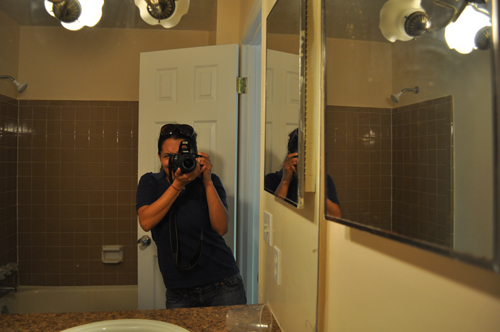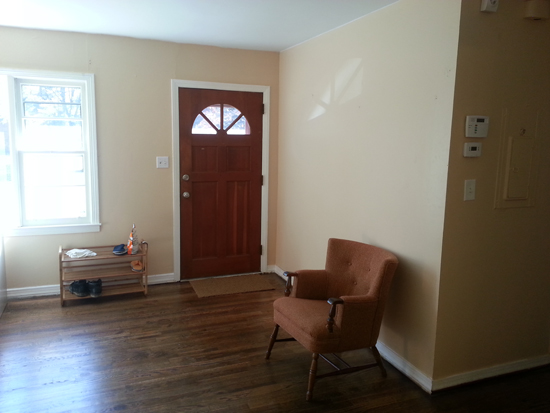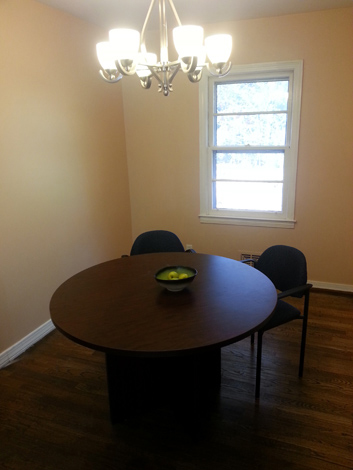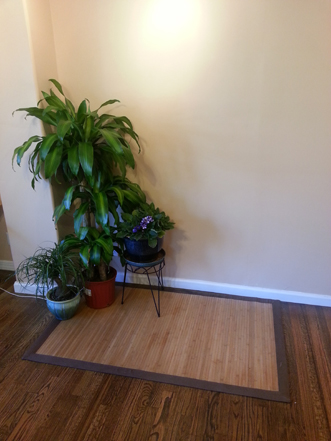
My former partner and I bought our third rental property in May.
We paid $0 down. We collect $15,000 per year in revenue. After expenses, including the financing, we pocket $3,000 per year in passive income from this rental property.
Not bad, eh?
NOTE: This article was last updated in July 2016 (and all numbers reflect that year). Minor update made in 2020 to reflect relationship status.
Here’s the whole story:
Our newest rental property, House #3, is a three-bedroom, 1.5-bath single-family home in a good school district in Atlanta. The seller was asking $125,000, and after tough negotiating, we snagged it for $94,000. Here’s the full story of the purchase.
After we bought the house, we spent $6,000 sprucing it up. We hired contractors to build a closet in one of the bedrooms. We busted up some old concrete steps outside. We installed a skylight. We refinished the hardwood floors.
You can see the “before” photos in the blog post at the link above.
Here are the “after” photos, below.
The renovations cost $6,000, which means our total purchase price (purchase plus upfront repairs) totaled $100,000.
This property is renting for $1,273 per month. Passive cash, baby! But let’s dig down deeper. How do those numbers compare to the cost of the home?
What’s the Cap Rate?
First let’s find the capitalization rate, more commonly known as the cap rate.
The cap rate measures the property’s cash return if it’s held free-and-clear. This formula measures how strong of a cash return you’ll receive, compared with the total price you paid for the property. In other words, it measures the strength or weakness of the deal itself, without conflating the financing into the analysis.
Why calculate this? The cap rate helps you examine the underlying deal. Every property will look terrible at a 99% interest rate, and many properties will look beautiful if they’re bought in cash. But that doesn’t mean those properties create strong returns.
First, you need to figure out whether or not the property is worth buying — and you do this by measuring the cap rate. If it’s a good investment, then you can start looking at financing.
To calculate the cap rate, you’ll first calculate “net operating income.” This is the net income that you collect from a property after paying its operating costs.
Let’s take a look at House #3.
Potential Gross Income: $15,276 per year (at full occupancy)
Less Vacancy: $764 (with a 5% vacancy rate)
Effective Gross Income: $14,512
This is how much money we can expect to collect. What about the operating expenses?
Expenses:
Management: $1,451/year
Property Taxes: $1,100/year (includes trash service)
Repair/Maintenance/CapEx: $940/year (one percent of purchase price)
Utilities: Paid by tenant
Yard Work: Paid by tenant
Insurance: $1,000* (estimated)
Operating Expenses: $4,491 per year
Net Operating Income: $10,021 per year. Yeah baby!
Right off the bat, I can see that this is a sweet deal. I’m netting $10,000 a year for a $100,000 house. That’s a 10 percent cap rate.
You can compare this to getting a consistent 10 percent dividend payout from a stable, blue-chip stock. (If you’re not familiar with the world of stock investing, that’s practically unheard-of.)
How Much Passive Income Do You Collect?
Now we know the cap rate. How much passive income are we collecting?
We didn’t get conventional financing, such as a mortgage from a bank. Instead, we secured a private loan in which we’re making interest-only payments at 7 percent. (Hold your horses! I know this might create chaos in the comments section. I’ll explain why we choose this below.)
Let’s look at the numbers in light of this loan.
Net Income: $10,021 per year
Financing Payments: $7,000 per year
PASSIVE CASH FLOW: $3,021 per year
We’re getting $3,000 in passive income from this house! That’s one huge step closer to financial freedom.
Why did we get the financing that we did? Look again at the numbers. Look carefully. How much money did we pay out-of-pocket for this investment?
Zero. Zip. Zilch. Nada.
Without spending a dime of our own money, we set up a deal in which we receive $3,000 in passive income per year. That’s the money we pocket after paying a property manager, plus setting aside a “rainy day” fund for long-term capital expenses, maintenance and repairs.
In other words, we borrowed at 7 percent and used the money to snag an investment that pays 10 percent. This practice is called “arbitrage,” an excellent word in the English language. ☺
“Why get interest-only financing?”
This gives us the most flexibility. We’re earning $3,000 a year in passive income, with no money down. We can choose – CHOOSE – to use our passive income to repay the principal on the house. We can use the money to buy another rental property. We can blow it on champagne and strippers. It’s our choice.
“What are you doing with that money?
First we’ll buy a few more rental properties. Then we’ll start paying down the loans. We’re reinvesting the profits back into the business.
“Why not borrow from a bank?”
I’d love to, but the bank said no. Every successful entrepreneur knows that you don’t quit the first time you hear the word “no.” You keep trying until you hear a “yes.”
“Are you worried that you’re over-leveraged?”
Nope. We have huge equity in our other properties. We bought House #2 in cash. We paid for many of the repairs on House #1, Unit #2 with cash. Relative to many real estate investors, we’re quite conservative.
“You pay a property manager a lot of money. Why not manage it yourself?”
At the moment, I do.
“Then why do you include a ‘management’ line-item?”
Because I pay myself for my time.
The management fee is active income for time spent managing the property. That’s radically different than the passive income I earn from owning the investment.
Rookie real estate investors conflate ‘paying themselves’ with ‘profit.’ You cannnot pay yourself $0 and pretend that your profits are higher. That’s B.S. accounting. Math shouldn’t depend on an individual’s identity.
Regardless of whether or not I (temporarily) choose to manage a property myself, I analyze the investment as though its 100% outsourced. By doing this, I can remove myself from the equation and the numbers will stay the same.
Remember, the goal is financial freedom, not a lifetime job.
“Are you talking to yourself, in the form of italicized questions?”
Uh, yeah.
“In public? On a blog?”
Uh, yeah.
“You’re a dork.”
That’s not a question.
“You just proved my point.”
Whatever.
______________
**For more information on our rental properties, check out the Real Estate FAQ HQ, which has a bunch of numbers and details you might be curious about.**




